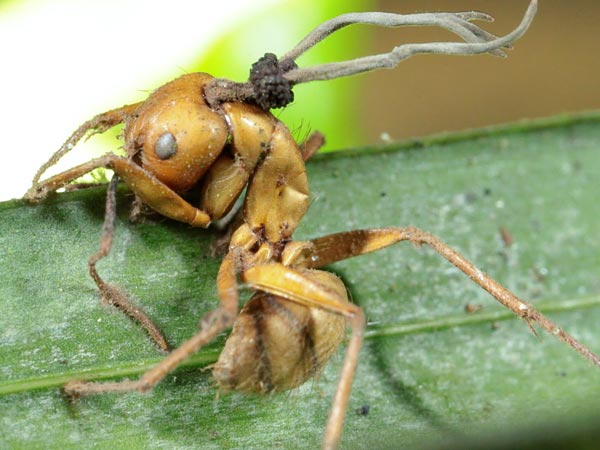
Reproduction
Ophiocordyceps camponoti-balzani has a crazy life cycle which begins by the infection of their host, the disease ultimately leading to the death of the host in as little as 3-6 days.
Spores enter the body in between the joints of the ant, spreading towards the head region and the abdomen region. Chemicals released by the organism directs the ant to the climb up and attach itself to a leaf. It is at this point the fungus kills the ant, utilizing the ant's insides as nutrition in order to grow. Hyphal growth present in all fungi spread throughout the body, aiding in the production of a fruiting body (anamorph) at the back of the head of the ant. Dikaryotic hyphal growth is also takes place around the antennae and joints (teleomorph), particularly around the legs which help to anchor the ant to the leaf.
Majority of fungi produce sexual spores. As you recall, Ascomycetes develop their spores in an ascocarp. Spores for Ophiocordyceps camponoti-balzani are considered too large for wind dispersal, and depend on the passing ant to pick up the spore on its body. Sporocarps develop after plasmogamy, completing the sexual cycle when the spores are produced in the ascus. The ascus begins when karyogamy occurs from a dikaryotic cell, which produces a diploid nucleus. Meiosis, then mitosis occurs resulting in the 8-spored asci. Two continuous membranes give rise in the ascus periphery, maturing until maturity ends with the explosive release of spores.
